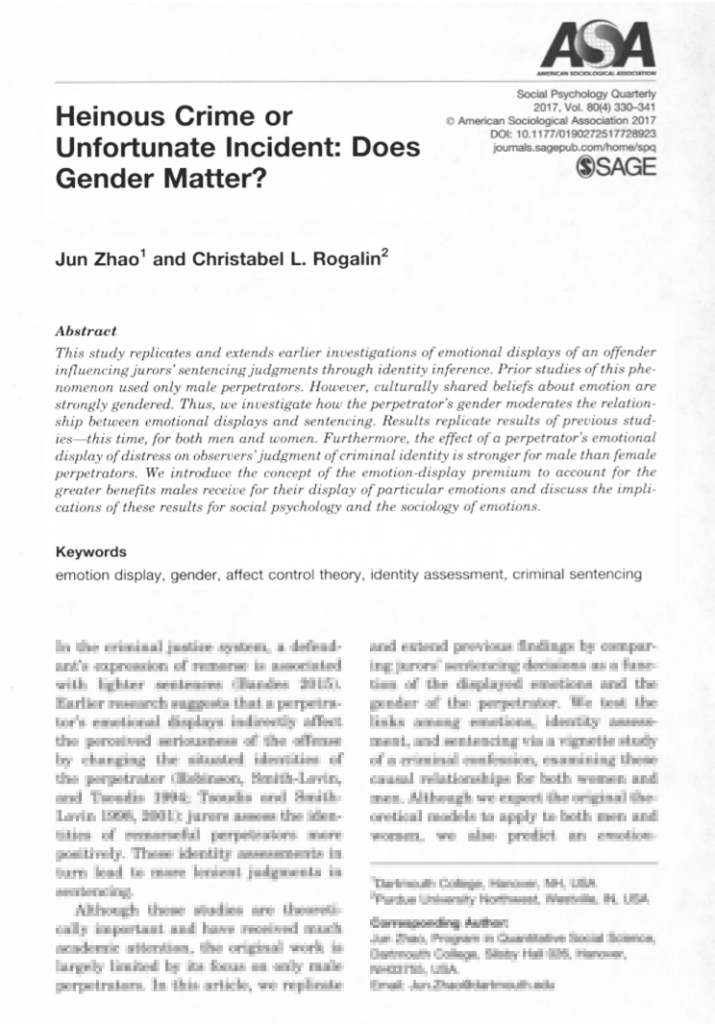
SCROLL DOWN FOR VIDEO
It’s the shortest part of your research paper (after the title) but your abstract is super important for the success of your paper.
With the help of a fantastic example, we will go through the step-by-step of how to write an abstract.
The example we are using was published in Social Psychology Quarterly in 2017 and shows us how to write an abstract for a dissertation as well as for publication.
- The Dunning-Kruger Effect: Why we think we know more than we do
- The Yale Food Addiction Scale: Are you addicted to food?
- Addicted to Pepsi Max? Understand addiction in six minutes (video)
- Functional Fixedness: The cognitive bias and how to beat it
- Summer Spending Spree! How Summer Burns A Hole In Your Pocket
How to write an abstract for a dissertation
In your abstract, you need to inform your reader of the following details in as succinct a manner possible:
- Introduce your hypothesis (or hypotheses)
- Outline your method (materials, apparatus, subjects, design and procedure)
- Provide an overview of your results
- Introduce what conclusions you draw from your results.
All of this in between 100-150 words. That’s quite a skill!
To see this skill in action, let’s look at Zhao and Rogalin’s (2017) abstract for their article “Heinous crime or unfortunate incident: does gender matter?”, published in Social Psychology Quarterly.
First up – I think this is a great title! It is intriguing and attention-grabbing, and yet also still totally on topic. So it excites the reader’s anticipation, without being misleading.
Let’s read their abstract:
How to write an abstract for a scientific paper – Example
“This study replicates and extends earlier investigations of emotional displays of an offender influencing jurors’ sentencing judgments through identity inference.”
This first sentence is a clear introduction to the research. In one sentence we already know:
- The method is replicating previously used methods of previous research.
- The hypothesis is that an offender’s emotional displays in the courtroom are able to influence the sentencing judgments that jurors are required to make.
- The hypothesis is that these decisions make use of identity inference, which can be informed by emotional displays.
“Prior studies of this phenomenon used only male perpetrators. However, culturally shared beliefs about emotion are strongly gendered. Thus, we investigate how the perpetrator’s gender moderates the relationship between emotional displays and sentencing.”
This section primarily focuses on the methodology.
We are aware that previous studies have overlooked a potential gender bias because they have only used male perpetrators. We can therefore understand that current study will correct this gender imbalance.
We can follow the researchers’ logical hypothesis that if beliefs about emotion are gendered, therefore we would expect judgments based on emotional displays to also reflect that gender bias.
“Results replicate results of previous studies – this time, for both men and women.”
This is the headline result.
In one short sentence, the researchers tell us their most important finding: results match the results of previous studies.
This is important as the method was a replication of previously conducted research.
“Furthermore, the effect of a perpetrator’s emotional display of distress on observers’ judgment of criminal identity is stronger for male than female perpetrators.”
This second comment on the results of the study make it clear that a gender bias is found.
This sentence speaks specifically to the hypothesis referred to earlier in the abstract: “the perpetrator’s gender moderates the relationship between emotional displays and sentencing.”
“We introduce the concept of the emotion-display premium to account for the greater benefits males receive for their display of particular emotions and discuss the implications of these results for social psychology and the sociology of emotions.”
The final sentence of this abstract talks about the researchers’ conclusions.
We know that following analysis of their results, the researchers believe that males receive greater benefits if they display certain emotions in front of a jury. Therefore the researchers have developed a concept that they call “the emotion-display premium”.
We also know that if we read the Discussion section of the paper, we will be able to read the researchers’ thoughts on the implications of their findings for social psychology and the sociology of emotions.

